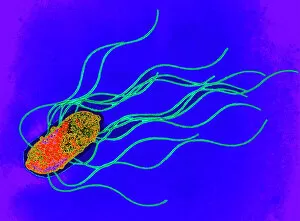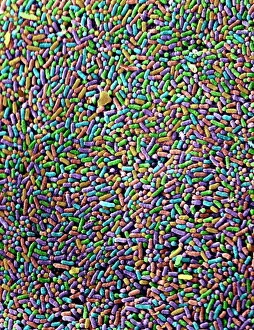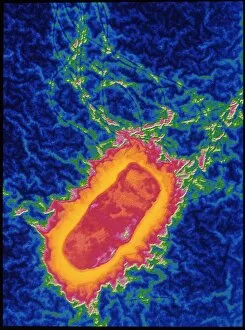Salmonellosis Collection
Salmonellosis, a bacterial infection caused by the notorious Salmonella bacteria, is a serious health concern worldwide
All Professionally Made to Order for Quick Shipping
Salmonellosis, a bacterial infection caused by the notorious Salmonella bacteria, is a serious health concern worldwide. This microscopic menace can be visualized through various imaging techniques such as coloured transmission electron microscopy (TEM) and scanning electron microscopy (SEM). In one captivating image captured by TEM, we witness the vibrant hues of a Salmonella bacterium, showcasing its intricate structure and highlighting its potential danger to human health. Similarly, SEM reveals another perspective of these cunning pathogens - their characteristic shape and surface features are brought into sharp focus. The ability to cultivate Salmonella in laboratory conditions has been instrumental in understanding this infectious disease. A striking photograph exhibits a Petri dish filled with a thriving Salmonella culture, reminding us of the importance of scientific research in combating this illness. One particular strain that poses significant risks is Salmonella typhimurium. SEM imagery provides an up-close look at these formidable bacteria; their distinct morphology serves as a reminder of the challenges faced when dealing with salmonellosis. As we delve deeper into the microscopic world inhabited by these tiny troublemakers, multiple images emphasize their prevalence and ubiquity. Whether it's through TEM or SEM snapshots, we encounter countless instances where Salmonella bacteria have infiltrated our environment – from contaminated food sources to unhygienic surfaces. Ultimately, understanding the intricacies requires studying individual organisms like never before. Through high-resolution TEM images capturing every detail of a single Salmonella bacterium or collective shots revealing clusters under SEM examination – each snapshot contributes to unraveling this complex puzzle. Salmonellosis remains an ongoing battle for public health authorities globally. By shedding light on these elusive microorganisms using advanced imaging techniques like TEM and SEM photography, scientists strive towards developing effective prevention strategies and treatments against this insidious bacterial infection that continues to threaten our well-being.









